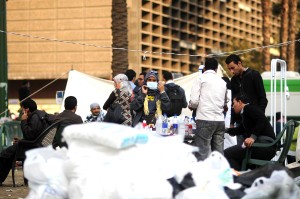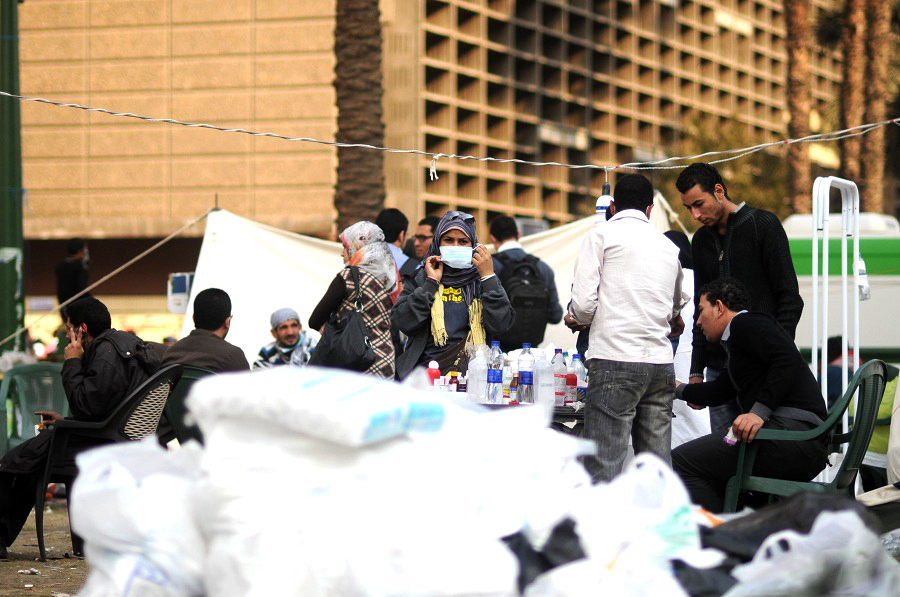
Laurence Underhill / DNE
After the revolution, a number of civil organisations took care of the injured, before the National Council for the Care of the Martyrs Families and the Injured (NCCMFI) was established.
Tahrir Doctors Society treated protesters in the square itself and referred those with graver injuries to hospitals. To provide on the field medical treatment, the society depended mainly on volunteer doctors and donations.
Five minutes away from the Qasr Al-Eini hospital, is the Friends of Tahrir Victims Association. It deals with over 1,000 injured and their families. It established a database for all the injured it received and provided medical and psychological treatment as well as a number of micro finance projects to help victims and their families financially.
The Association of Egyptian Civilians and the Masr El Nour Association sought to establish rehabilitation programs for the injured, with the latter focussing on those who became handicapped during the revolution.
Individuals such as businesswoman, Heba Al-Swedy, took on the responsibility of treating people at her own expense.
Then in December 2011, NCCMFI was set up. It worked in coordination with other governmental and non-governmental partners including the ministries of Health and Population, Interior, Manpower and Immigration, Finance and the National Organisation for Social Insurance ( which deals with pensions for the martyrs’ families.)
NCCMFI works with the governmental hospitals, Agouza Military Hospital for Rehabilitation and the New Qasr Al-Eini Hospital. Recently, the International Medical Center also received a few injured after complaints and protests by the injured. The non-governmental Masr El Kheer Foundation is also a partner of NCCMFI.
Lastly, the Union of January 25 Injured and the Association of Mohamed Mahmoud and Council of Ministers Injured, are the two main political groups representing the injured.




